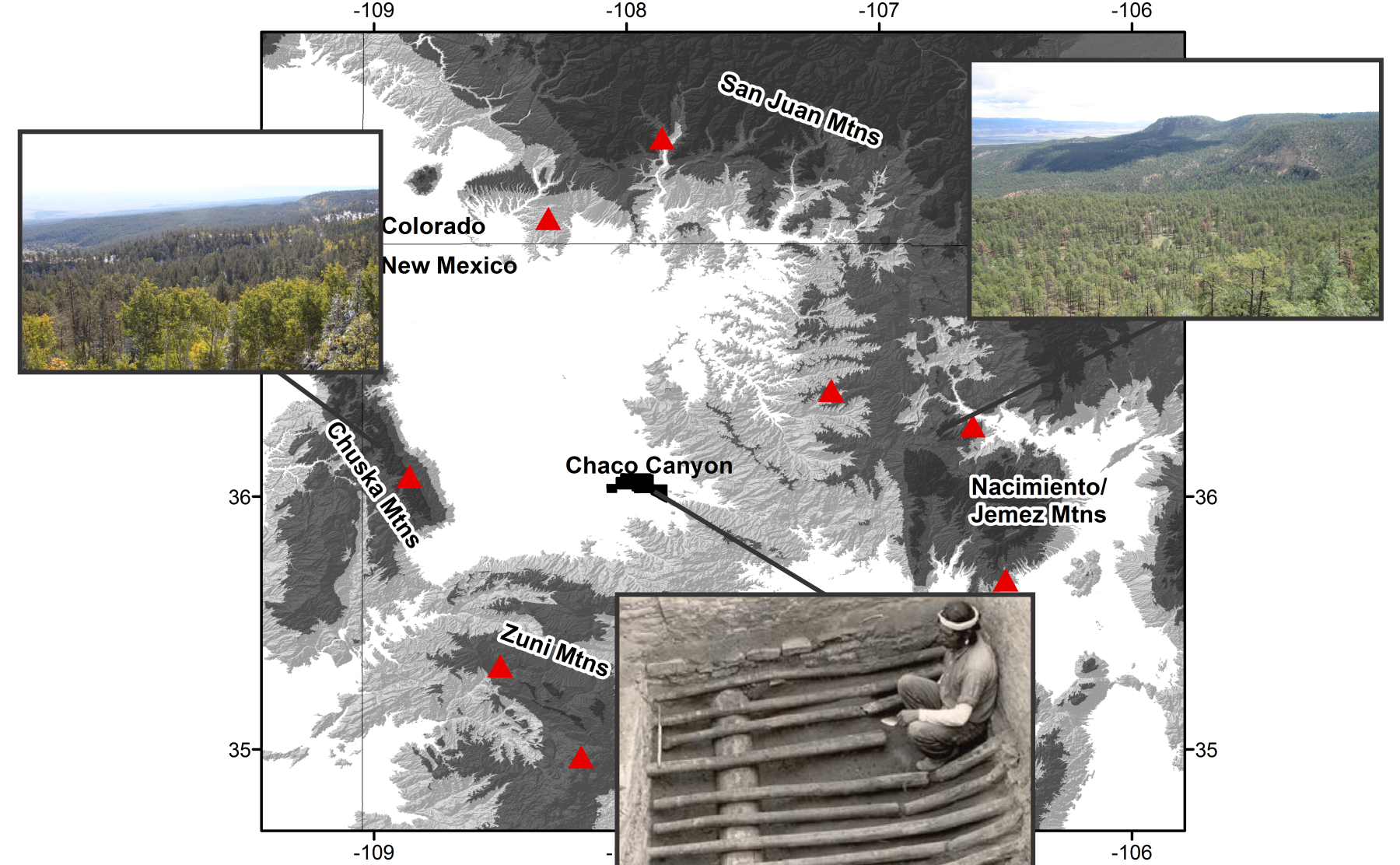Tree rings show where the trees used for Chaco Canyon great house timbers grew
The central technique in dendrochronology is crossdating: placing a previously unknown wood sample in time by matching its ring patterns to summary chronologies of known age. But a similar technique, dendro-provenancing, can also place it in space: if there are several chronologies summarizing the ring patterns of trees in different areas, the ring pattern in the unknown sample should be most similar to the rings of trees growing near its source, and less similar to those growing farther away. The great houses at Chaco Canyon are the most significant structures in the most impressive complex of prehistoric ruins in the USA, and include not just stone walls but numerous substantial wooden beams. The landcape at Chaco is open and treeless, and this setting has not changed for many centuries, so the people building the structures had to carry in the beams from surrounding mountain ranges. A previous study had used the chemical composition of the wood to identify the Chuska Mountains as a source, but a recent publication by Chris Guiterman, Jeff Dean and Tom Swetnam in Proceedings of the National Academy of Sciences uses dendro-provenancing to show that there were multiple source areas for timbers, and that the preferred source area changed over time.
Guiterman, C.H., T.W. Swetnam, J.S. Dean, 2015. Eleventh-century shift in timber procurement areas for the great houses of Chaco Canyon. PNAS Early Edition, doi: 10.1073/pnas.1514272112


